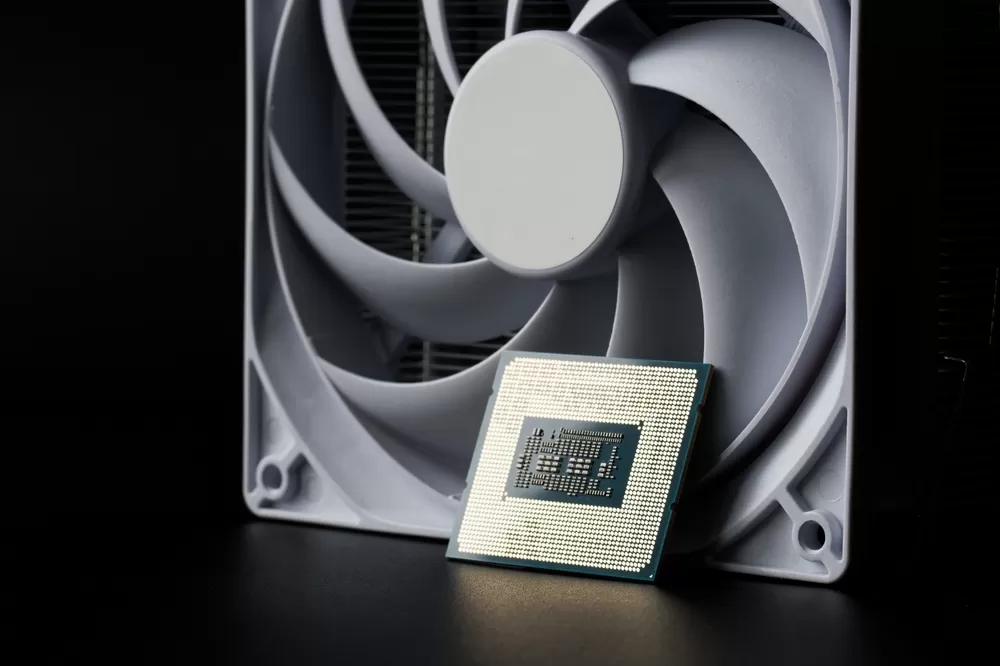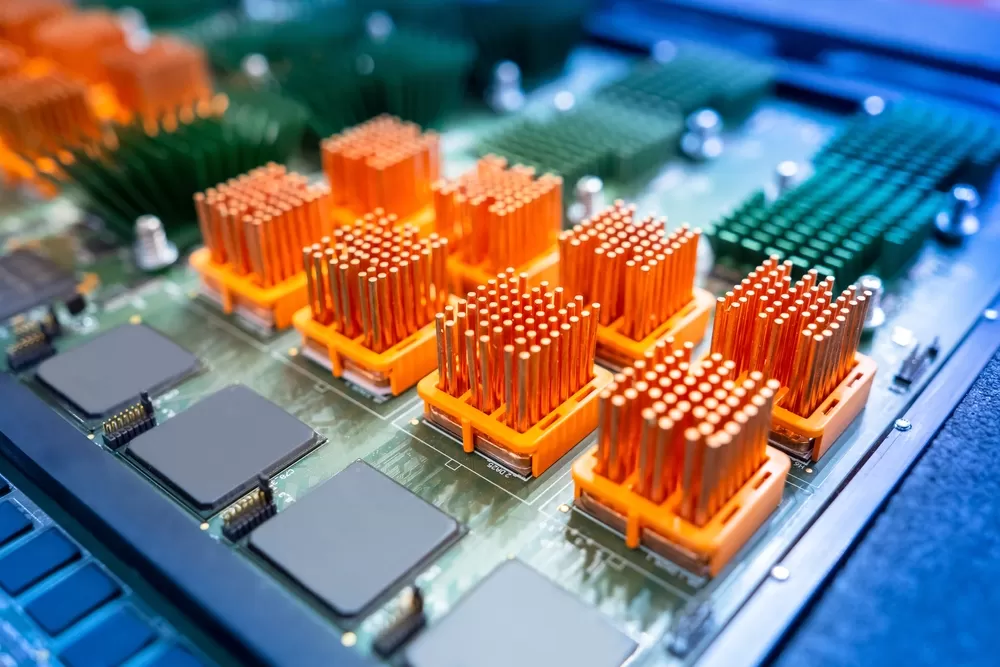In accordance with the European Union’s General Data Protection Regulation (GDPR), we are committed to safeguarding and ensuring your control over your personal data. By clicking “Accept All” you are permitting us to use cookies to enhance your browsing experience, assist us in analyzing website performance and usage, and deliver relevant marketing content. You can manage your cookie settings below. By clicking “Confirm” you are agreeing to the current settings.
Optimizing Heat Dissipation in Electronic Devices: Key Strategies for Thermal Management

Understanding Heat Dissipation in Electronic Devices
To avoid thermal stress and assure system stability, heat dissipation in electronic devices channels heat from CPUs, GPUs, and power supplies. Poor heat management causes thermal throttling, lowering component performance, and high temperatures promote material fatigue and deteriorating solder junctions and substrates. Localized overheating may cause warping, circuit failures, and fires via conductive and radiative heat transfer. So, accurate thermal modeling, component placement, and vapor chambers or heat pipe integration help minimize such hazards.
Key Factors Influencing Heat Dissipation in Electronic Devices
-
Power Density and Thermal Challenges: Increased power density generates localized hotspots in electronic devices, heightening the need for effective cooling solutions. Along these lines, efficient heat dissipation in electronic devices might control heat flux density through thermal interface materials (TIMs) and heat spreaders.
-
Material Conductivity for Thermal Management: High-conductivity materials, including copper or aluminum, accelerate heat transfer from heat sources to cooling interfaces. Also, graphene and diamond-based thermal materials have even better thermal conductivity. They show promise for next-gen heat dissipation in electronic devices.
-
Surface Area Optimization: Increasing surface area enhances thermal exchange through conduction and convection. Heatsinks with pin or microchannel structures attain better airflow and heat spread. Thus, design geometry affects dissipation efficiency.
-
Impact of Ambient Temperature: High ambient temperatures decrease the thermal gradient, which might slow heat transfer. Devices can integrate active cooling mechanisms, including fans or thermoelectric coolers, for this. Environmental considerations help deploy powerful thermal solutions for punitive climates.
Optimizing Heat Dissipation: Strategies for Thermal Management

Heat Sinks
Heat sinks increase the surface area of heat dissipation in electronic devices. They use conduction to absorb heat from components and convection to release it into the surrounding air. Aluminum is used due to its thermal conductivity (205 W/m·K) and lightweight properties. Copper (385 W/m·K) is preferred for higher heat loads. High-performance GPUs and CPUs may use hybrid heat sinks combining both materials for weight and efficiency. E.g., heat sinks are important since current desktop processors like Intel's i9-13900K create 250 W of heat.
Thermal Interface Materials (TIMs)
TIMs verify heat dissipation in electronic devices without air gaps between components and heat sinks. Air is an insulator with 0.026 W/m·K thermal conductivity. Thermal paste can have different conductivities for heat transfer. Indium foil TIMs provide conductivity as high as 84 W/m·K for cooling applications. Thermal pads are used in mass-production designs like laptops. Liquid metal TIMs with better performance are popular in overclocking setups.
Active Cooling (Fans and Blowers)
Active cooling uses fans and blowers for continuous airflow to accelerate convection and heat dissipation in electronic devices. High-performance gaming rigs can generate 300-400 W of heat, needing active cooling solutions. For example, a high-speed fan moving 120 CFM may lower CPU temperatures by up to 15°C than passive methods. Server farms use redundant fan arrays for reliability. Blowers for concentrated airflow in confined spaces suit compact gaming laptops.
Heat Pipes
Heat pipes are practical in passive thermal management to transfer heat via a liquid-to-vapor phase change. They utilize the evaporation-condensation cycle to move heat over short distances. Heat pipes with 100,000 W/m·K beat metal conduction in localized heat dissipation. They are key to ultrabooks and smartphones since space constraints demand compact solutions. E.g., the MacBook Pro uses multiple heat pipes to distribute heat from the CPU and GPU to the chassis.
Liquid Cooling Systems
Liquid cooling systems provide efficiency in managing heat dissipation in electronic devices with high thermal loads. A setup may include a pump, radiator, and coolant. Radiators with copper fins might dissipate heat for overclocked CPUs or GPUs, generating high heat spikes. Liquid cooling tops air cooling in thermal efficiency to keep parts at stable temperatures under heavy loads. Yet, its complexity and maintenance demands suit enthusiasts or industrial users.
Thermal Spreaders
Thermal spreaders avert hotspots while distributing heat across larger surfaces. They can be thin plates of graphite and have thermal conductivities of 1000-2000 W/m·K, nearly five times higher than copper. Used in smartphones, they handle localized heat dissipation in electronic devices. Apple's iPhone models employ vapor chamber-based spreaders to manage heat from high-power processors. Such solutions are key to devices with slight space and airflow for thermal stability.
Challenges in Modern Heat Dissipation
-
Miniaturization and Cooling Constraints: As devices get miniaturized, the surface area for heat transfer diminishes for thermal bottlenecks. Graphene and phase-change materials help augment thermal conductivity. Additionally, microfluidic cooling systems address heat dissipation in electronic devices with constrained geometries.
-
Increased Power Output Challenges: Due to intensified power densities, high-performance GPUs and CPUs demand rapid heat removal. Novel vapor chamber designs and two-phase cooling are moderating localized hotspots. For better heat flow, dynamic thermal management systems respond to differing workloads in real time.
-
Environmental Factors in Heat Dissipation: Devices in high ambient temperatures or humidity face impaired heat transfer rates. Heat exchangers using corrosion-resistant alloys and liquid coolants with high boiling points are reliable here. For humid environments, sealing techniques lower moisture ingress for cooling efficiency.
Design Considerations for Optimizing Heat Dissipation
Strategic Component Placement
Component placement is crucial for heat dissipation in electronic devices. High-power CPUs and GPUs should be positioned close to heatsinks or fans for lower thermal resistance paths. Even a 2mm air gap between a processor and a heatsink can increase thermal resistance. To decrease hotspots, distribute heat sources across the PCB. Placing capacitors and other heat-sensitive components downstream from airflow verifies that they are within thermal operating limits. Considering that airflow directionality is key, straightened airflow cuts thermal gradients.
Advanced Material Selection
Material choice impacts heat dissipation in electronic devices. Copper benefits heat spreaders but adds weight. Instead, aluminum offers a balance with enough thermal conductivity and lower density. Graphene is emerging in designs for compact devices. Dielectric substrates, including AlN, with suitable thermal vias in multilayer PCBs. Confirming that thermal interface materials like silicone pads have low thermal resistance boosts heat transfer between components.
Precision with Thermal Simulation Tools
Thermal simulation tools, including ANSYS Icepak or COMSOL Multiphysics, optimize heat dissipation in electronic devices. They help map heat flux and temperature gradients. For example, transient thermal analysis can predict peak temperatures under fluctuating workloads. It helps avoid thermal runaway. Simulations might reveal suboptimal heat sink fin spacing. Adjusting this can improve convective heat transfer. Plus, CFD models let designers adjust airflow patterns in tricky geometries to cut system temperatures by several degrees Celsius.
We offer free and comprehensive thermal simulation services. Click the link to learn more.
